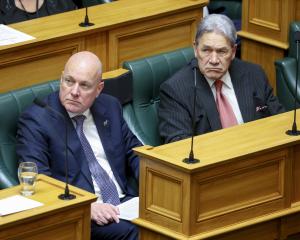

The same cannot be said for official information.
As controversy swirls around the cock-up/conspiracy claims over the failure to release former minister Stuart Nash’s career-ending emails under the Official Information Act, should we also care about less headline-grabbing concerns over stage management of more straightforward official information?
In mid-March, the Government announced it was proceeding with the next stage of the NZ Battery Project looking at the viability of a pumped hydro scheme at Lake Onslow, along with a hodge-podge of other alternatives to coal burning in a dry year. Estimated Onslow project costs had quadrupled to $15.7 billion. Initial estimates for the hodge-podge (portfolio) option was about $13.5 billion, but with significantly higher operating costs, the media release said. The portfolio option includes biomass, interruptible hydrogen electrolysis and geothermal plant with flexible output. (Energy and Resources Minister Megan Woods says there is also the possibility of investigating a smaller pumped hydro scheme in the North Island, but this is still in the pre-feasibility stage.)
The announcement came a month after the Cabinet’s February decision. Rather than issue relevant redacted documents with the media release, including the cabinet paper, the 400-plus-page indicative business case (IBC)and the Environmental Impact Statement (EIS) on the Onslow proposal, the Ministry of Business, Innovation and Employment did the classic Friday afternoon dump of those documents on to its website last week. (I have already been chided by a press secretary for being cynical about this timing).
However, apart from the EIS, the phase-one feasibility study’s documents used to inform the IBC are not yet available.
MBIE told me a team is working on "proactively" releasing them but this was a substantial body of work and it will take a couple of months.
Forgive me if this seems more reactive than proactive. Is it good enough when these documents were completed last year?
Without them, how can those interested in poring over the details of this understand whether the IBC has been adequately informed by the feasibility study and whether the conclusions reached are valid?
Last September I sought the draft EIS, before it went to the Government. Withholding it then was considered necessary to maintain the effective conduct of public affairs through free and frank expression of opinions. I argued there was considerable public interest in this and I could not see how the release of a basically factual report could impede such expression. With the help of the Ombudsman’s office, the final document with redactions was released to me about a week before it went up on the website, although I am no closer to knowing whether the original refusal was valid.
The IES identified many impacts, stating benefits of the Lake Onslow project would come at the loss of important wetlands, fish and plant species which were unlikely to be fully replaceable. The unavoidable loss of regionally and nationally significant, extensive, diverse and rare wetlands was one of the most significant adverse effects. About 1330ha of important wetland would be affected, including the 526ha of the Fortification Creek wetland complex considered nationally significant.
Curiously, the February cabinet paper reference to loss of wetlands makes no mention of their national significance or that the loss would be inconsistent with the national policy direction on retention of remnant wetlands. Is the Government already trying to play down the likely environmental impact of this project long before it passes go?
Given the IES says the environmental impacts are such bespoke legislation would be needed to get around existing law constraints, Dr Woods was asked how much environmental impact would be considered too much to call a halt to the project. She said there were always trade-offs with any large energy project and clean energy benefits would need to be carefully balanced with potential environmental effects. All current hydro dams had their environmental impacts when they were built three decades ago, "but it’s good to know that since then environmental regulations have become more protective while there are potentially more mitigation measures available".
Potentially, if I was not still in my aqua dressing gown, at an untidy desk, before a laptop whose functioning depends on clever placement of nutcrackers, I might be able to make sense of that. The reality is I am and I can’t.
- Elspeth McLean is a Dunedin writer.












